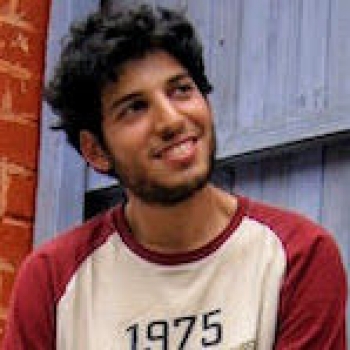
Year of Graduation:
Advisors/Lab:
Current Position:
The Friedman Lab studies how microbial communities form, function, and evolve. We focus on relating the genomes of individual microbes to the properties of the multispecies communities they form, and the evolution of individuals within such complex communiites. To do so, we combine theoretical modeling and simulations, observations of natural communities, and laboratory experiments in synthetic microbial communities.
Bio:
I am currently a senior lecturer of microbial ecology and evolution at the Hebrew University of Jerusalem. Before joining the Hebrew University I was a postdoctoral researcher at Jeff Gore's lab in MIT's Physics of Living Systems Group. I also gained a PhD in Computational & Systems Biology at MIT, working with Eric Alm and Daniel Rothman.
Doctoral Thesis Title: Microbial adaptation, differentiation, and community structure
Publications while at MIT:
1. Erratum to: Host lifestyle affects human microbiota on daily timescales.
David LA, Materna AC, Friedman J, Baptista MI, Blackburn MC, Perrotta A, Erdman SE, Alm EJ.Genome Biol. 2016 May 31;17(1):117. No abstract available. PMID: 27246704 Free PMC Article
2. Host lifestyle affects human microbiota on daily timescales.
David LA, Materna AC, Friedman J, Campos-Baptista MI, Blackburn MC, Perrotta A, Erdman SE, Alm EJ.Genome Biol. 2014;15(7): R89. Erratum in: Genome Biol. 2016;17(1):117.PMID: 25146375 Free PMC Article
3. Computational methods for high-throughput comparative analyses of natural microbial communities.
Preheim SP, Perrotta AR, Friedman J, Smilie C, Brito I, Smith MB, Alm E.Methods Enzymol. 2013; 531:353-70. doi: 10.1016/B978-0-12-407863-5.00018-6. PMID: 24060130
4. Sympatric speciation: when is it possible in bacteria?
Friedman J, Alm EJ, Shapiro BJ.PLoS One. 2013;8(1): e53539. doi: 10.1371/journal.pone.0053539. Epub 2013 Jan 17.PMID: 23349716 Free PMC Article
5. Inferring correlation networks from genomic survey data.
Friedman J, Alm EJ. PLoS Comput Biol. 2012;8(9):e1002687. doi: 10.1371/journal.pcbi.1002687. Epub 2012 Sep 20. PMID: 23028285 Free PMC Article
6. Shape and evolution of the fundamental niche in marine Vibrio.
Materna AC, Friedman J, Bauer C, David C, Chen S, Huang IB, Gillens A, Clarke SA, Polz MF, Alm EJ. ISME J. 2012 Dec;6(12):2168-77. doi: 10.1038/ismej.2012.65. Epub 2012 Jul 26. PMID: 22832347 Free PMC Article
7. A framework for human microbiome research.
Human Microbiome Project Consortium. Nature. 2012 Jun 13;486(7402):215-21. doi: 10.1038/nature11209. PMID: 22699610 Free PMC Article
8. Structure, function and diversity of the healthy human microbiome.
Human Microbiome Project Consortium. Nature. 2012 Jun 13;486(7402):207-14. doi: 10.1038/nature11234. PMID: 22699609 Free PMC Article
9. Population genomics of early events in the ecological differentiation of bacteria.
Shapiro BJ, Friedman J, Cordero OX, Preheim SP, Timberlake SC, Szabó G, Polz MF, Alm EJ. Science. 2012 Apr 6;336(6077):48-51. doi: 10.1126/science.1218198. PMID: 22491847 Free PMC Article
10. Ecology drives a global network of gene exchange connecting the human microbiome.
Smillie CS, Smith MB, Friedman J, Cordero OX, David LA, Alm EJ. Nature. 2011 Oct 30;480(7376):241-4. doi: 10.1038/nature10571. PMID: 22037308
11. Looking for Darwin's footprints in the microbial world.
Shapiro BJ, David LA, Friedman J, Alm EJ. Trends Microbiol. 2009 May;17(5):196-204. doi: 10.1016/j.tim.2009.02.002. Epub 2009 Apr 15. Review. PMID: 19375326
